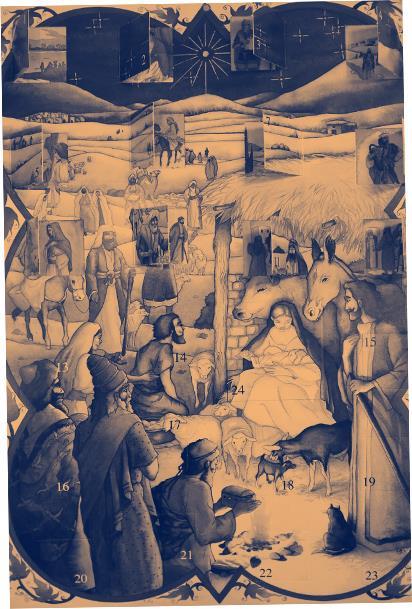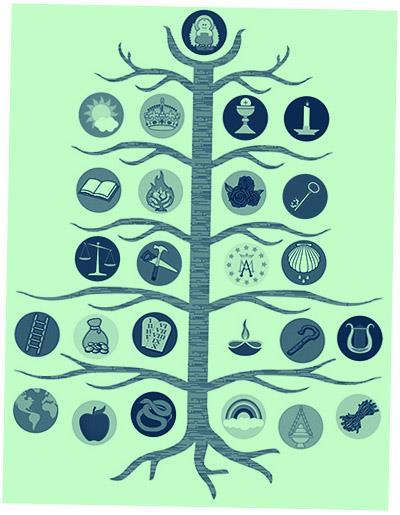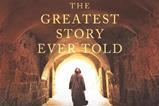Gareth Crispin suggests that you can get preparing for Advent now, and reap the benefits later
Have you seen any signs of Christmas yet? Notices about office Christmas parties often come first, then mince pies in the supermarket (even with an end of November best before!) earlier and earlier the preparations seem to start! As I type (on 27 October) I’m waiting for my son who’s playing in a music group and two mums have literally just started singing Santa Clause is coming to town! You couldn’t have scripted it better!
As Christians we can get swept up in this rush to Christmas and forget that there is a season that comes before The Season – I’m talking about advent. But what exactly is advent and why do we celebrate it? The purists will say (and I found this out after over 35 years in churches!) that advent is when we remember the second coming of Christ. Before we celebrate the first coming of Christ, we take a moment to celebrate the second coming. As a youth, children and families worker I tried year after year to get this changed. I used to say:
‘look, think about it from the perspective of youth and children or even people new to the faith, it’s so confusing! We start in September with a Gospel with Jesus walking around teaching and healing, we then switch in advent to Jesus coming again (where he went no one knows because we haven’t got to Easter yet!) then suddenly he is being born at Christmas (but I thought he was already walking around and … er … then ‘coming again’), we then want to go deep with a bit of Old Testament and finish off in the spring/summer with a New Testament letter. Confused, people will be!’
Sadly, I lost that argument year after year. Before we get on to advent have a think about how your church year flows chronologically – it makes a difference to youth and children (and in fact people who are new to the faith). I was told that we had to do advent then and we had to say that it was all about the second coming because that was what it was really about. But that doesn’t make sense, it’s a social construction, we’ve made it up, we can change it! OK rant over.
It might be too late to change your whole church calendar (but come back to that with your church leaders after Easter before they’ve planned the next academic year) but it’s probably not too late to change what advent means to you and your church family. The sensible and obvious thing to talk about is how we are waiting for Jesus first coming. So many people were waiting for God’s Messiah to come and Mary was literally waiting for the birth and in the same way that they prepared themselves we too should get ready. It’s not mandated in the Bible, but it’s a good thing to do, the fast before the feast, the season of reflecting and preparing.
But how might families and churches do that this year? What ideas are there? Well, here are four things you can do and if you act now, you can get any of these ready for the start of advent (which in case you want to know is 3 December this year – 4 Sundays before Christmas).

Advent calendars
OK so it’s another tradition that we nicked from the Germans about a hundred years ago but what’s useful is useful. There used to be a time when Christian advent calendars (yes I know in theory they should all be Christian but…) had no chocolate inside so either no one bought them or parents bought one AND one that did have chocolate in it (but zero Jesus). Mercifully in the last couple of decades people have started making proper advent calendars with chocolate and they are a winner.
The Meaningful Chocolate Company make ‘The Real Advent Calendar’ and it comes with a story activity book, one page for each day, with a reading that links to the window that is being opened. You can spend a couple of minutes opening the window, reading the booklet engaging with what it suggests and saying a quick prayer, and yes, eating the chocolate! (Divine do a similar calendar but without the booklet). You could even look to promote them in the local community and schools, it’s an easy way to engage with those around you. If you want to dig deeper into the options, look up this blog post from Faith in Kids. Also check out the Premier advent calendar and look at other shopping options on the site.
Advent family Bible times
As with the calendars there are a number of resources out there to help you engage and reflect on advent as a family. One great example is ‘The Adventure of Christmas’ from the Good Book Company. It functions a bit like an advent calendar that the whole family explores together. There are top tips on how to manage different ages and stages, a daily Bible reading, questions divided up by age and optional extras ranging from suggestions for relevant testimonies through to baking ideas.
Many of us are nervous about doing something like this – what would I say? What will I do? What if they don’t like it? What if they ask me questions I can’t answer? Well, this short little resource equips you and encourages you to give it a go – and think of it like this: the run up to Christmas is the best time to do this, things are always different in December and youth and children in your families will be expecting to talk about Jesus.
For some other ideas check out God Venture’s resources for advent.
Jesse tree
The next two ideas are a bit more alternative, this one, the Jesse tree, is for families and the next one, the pass round nativity set, is for whole churches. Firstly, the Jesse tree. I won’t lie, this takes more preparation, but you know how the saying goes: the more you put in, the more you get out. My family has used a Jesse tree for over ten years and it’s a great family advent tradition.
The basic idea is that you find a dead tree branch that is big enough to take twenty-four hanging objects but not so big it takes over a whole room in your house! (you want to find this a week before you use it to allow it to dry out). You then need to think about how to support it to it stands up (a bucket with bricks in normally does the trick). You can then also make it look all nice with some material around the base.
Then (and this is where it gets a bit involved) you need to plan out 24 Bible verses that go from Isaiah 10:10 which promises that the Messiah would be a root of Jesse (meaning a descendent of Jesse, the father of King David) through to the birth of Jesus. I have to say we cheated. Our boys were young when we started our Jesse tree and we felt starting at Genesis 1 would make more sense as you cover the whole story of the lead up to Jesus (which the Messiah was needed etc. etc.).
Then (I know, I know stay with me, it’s worth it) you begin to plan to create objects to represent the readings (a ping pong ball is painted to become the world at creation, a rainbow represents Noah etc. etc). We used to spend the whole of the Saturday before the first Sunday of Advent making and remaking these objects and they have become special items in the life of our family (you can always fast track some of them in the early years by just doing drawings but get more adventurous as the year’s go by).
Each day of advent, over a meal or just before bed, you can take out the reading and the object (OK we put chocolate in a bag as well), read the reading, hang the object and pray a short prayer, job done. It has to be one of the best traditions we have brought into our family. We definitely have put more into this one over the years but have also definitely got more out.
You can find more guidance and ideas on Jesse trees here.

The nativity set pass around
OK so it’s not a very snappy title and yeah OK it’s historically been called a Posada (not to be confused with passata) and yes OK it is Roman Catholic in origin. But it is totally brilliant. It’s one for the whole church – a really great intergenerational activity (if it’s a real problem in your Protestant church then just call is the ‘nativity set pass around’ and don’t tell anyone where it comes from!).
So, this is how it goes – its dead simple, but produces wonderful moments. You find a nativity set – you want to go for one that looks nice but it’s going to get passed around from home to home, so you want it to be fairly robust (we have previously used a soft toy set just to be sure!). You take Jesus out (because he hasn’t come yet – remember!). You find a nice-looking box for it to go in and inside you put a Bible verse that indicates that this is a time of waiting. That verse could simply be an Old Testament prophecy, like Isaish 9:6 which talks about the coming Messiah being a Prince of Peace, or it could be the words of the angel to Mary in Luke 1. You then also put a short prayer in (in nice big easy to read font) that sits in the space of anticipation and desire for the coming of the Messiah.
You then find that person in your church who has the spiritual gift of persuading people to do something (every church has one) and you encourage people (whatever their home/family situation – this isn’t just for youth and children) to sign up to receive the nativity set for an evening and to take it on to the next person the next day/evening. When someone has the nativity set one evening, they then know who to take it onto the next day/evening. When they take it around to the next house, they are welcomed in (I always find tasty snacks help here) and those that have brought the nativity set in read the Bible verse and prayer – we also used to write a few words of introduction and explanation so that people didn’t have to worry about what to say. The hosts then receive the nativity set and put it in pride of place in their house – and so it goes on around your church family (even including people form the local community that want to join in).
I can honestly say that I have kept the best to last here. This was one of the most moving and transformative advent activities I have seen – something that brings the generations together without embarrassment, allowing people to more easily invite others into their homes and giving them something to do to break the ice. More importantly, it brings an act of worship into the home and outside the formal structures of the church, enabling people to see that acts of worship can happen in all sorts of times and places. If you experience this, I can guarantee it will have been worth waiting for.


































